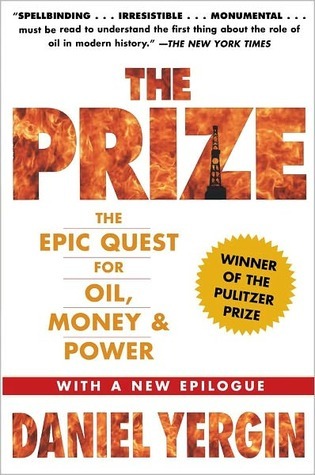More on this book
Community
Kindle Notes & Highlights
Started reading
October 20, 2024
Oil was hardly unfamiliar to mankind. In various parts of the Middle East, a semisolid oozy substance called bitumen seeped to the surface through cracks and fissures, and such seepages had been tapped far back into antiquity—in Mesopotamia, back to 3000 B.C. The most famous source was at Hit, on the Euphrates, not far from Babylon (and the site of modern Baghdad). In the first century B.C., the Greek historian Diodor wrote enthusiastically about the ancient bitumen industry: “Whereas many incredible miracles occur in the Babylonian country, there is none such as the great quantity of asphalt
...more
Bitumen was a traded commodity in the ancient Middle East. It was used as a building mortar. It bound the walls of both Jericho and Babylon.
It was also used for road making and, in a limited and generally unsatisfactory way, for lighting. And bitumen served as a medicine. The description by the Roman naturalist Pliny in the first century a.d. of its pharmaceutical value was similar to that current in the United States during the 1850s. It checked bleeding, Pliny said, healed wounds, treated cataracts, provided a liniment for gout, cured aching teeth, soothed a chronic cough, relieved shortness of breath, stopped diarrhea, drew together severed muscles, and relieved both rheumatism and fever. It was also “useful for straightening
...more
There was yet another use for oil; the product of the seepages, set aflame, found an extensive and sometimes decisive role in warfare.
the use of petroleum had a long and varied history in the Middle East. Yet, in a great mystery, knowledge of its application was lost to the West for many centuries, perhaps because the known major sources of bitumen, and the knowledge of its uses, lay beyond the boundaries of the Roman empire, and there was no direct transition of that knowledge to the West.
It did not take long for Pennsylvania rock oil to find its way to market refined as kerosene. Its virtues were immediately clear. “As an illuminator the oil is without a figure: It is the light of the age,” wrote the author of America’s very first handbook on oil, less than a year after Drake’s discovery.
By 1879, the war was virtually over. Standard Oil was triumphant. It controlled 90 percent of America’s refining capacity. It also controlled the pipelines and gathering system of the Oil Regions and dominated transportation.
One June 28, 1914, eleven days after Parliament approved Churchill’s bill, Archduke Franz Ferdinand of Austria was assassinated at Sarajevo. It was not until August 10, 1914, that the Anglo-Persian Oil Convention would receive its Royal Assent. By then, the world had changed. Russia mobilized on July 30. On August 1, Germany declared war on Russia and mobilized its armies. At 11:00 P.M. on August 4, after Germany had ignored a final British ultimatum against violating Belgium’s neutrality, Churchill flashed a message to all of His Majesty’s ships: “COMMENCE HOSTILITIES AGAINST GERMANY.” The
...more
The British needed a monarch for Iraq, another new state, this one to be formed out of three former provinces of the Turkish empire. Political stability in the area was required not only by the prospect for oil, but also for the defense of the Persian Gulf and for the new imperial air route from Britain to India, Singapore, and Australia. The British did not want to rule the region directly; that would cost too much. Rather what Churchill, then the head of the Colonial Office, wanted was an Arab government, with a constitutional monarch, that would be “supported” by Britain under League of
...more
This highlight has been truncated due to consecutive passage length restrictions.


